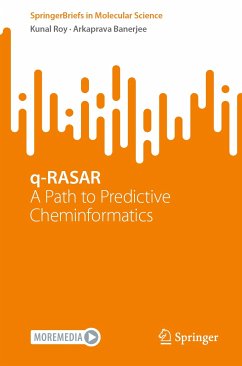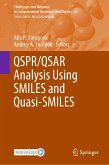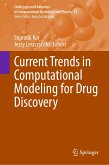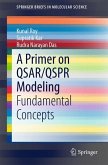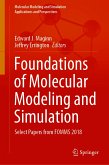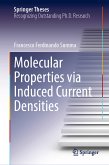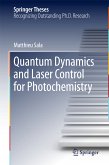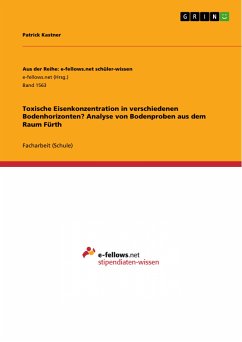48,14 €
inkl. MwSt.
Sofort per Download lieferbar
- Format: PDF
- Merkliste
- Auf die Merkliste
- Bewerten Bewerten
- Teilen
- Produkt teilen
- Produkterinnerung
- Produkterinnerung

Bitte loggen Sie sich zunächst in Ihr Kundenkonto ein oder registrieren Sie sich bei
bücher.de, um das eBook-Abo tolino select nutzen zu können.
Hier können Sie sich einloggen
Hier können Sie sich einloggen
Sie sind bereits eingeloggt. Klicken Sie auf 2. tolino select Abo, um fortzufahren.

Bitte loggen Sie sich zunächst in Ihr Kundenkonto ein oder registrieren Sie sich bei bücher.de, um das eBook-Abo tolino select nutzen zu können.
This brief offers an introduction to the fascinating new field of quantitative read-across structure-activity relationships (q-RASAR) as a cheminformatics modeling approach in the background of quantitative structure-activity relationships (QSAR) and read-across (RA) as data gap-filling methods. It discusses the genesis and model development of q-RASAR models demonstrating practical examples. It also showcases successful case studies on the application of q-RASAR modeling in medicinal chemistry, predictive toxicology, and materials sciences. The book also includes the tools used for q-RASAR…mehr
- Geräte: PC
- ohne Kopierschutz
- eBook Hilfe
- Größe: 2.36MB
- Upload möglich
Andere Kunden interessierten sich auch für
![QSPR/QSAR Analysis Using SMILES and Quasi-SMILES (eBook, PDF) QSPR/QSAR Analysis Using SMILES and Quasi-SMILES (eBook, PDF)]() QSPR/QSAR Analysis Using SMILES and Quasi-SMILES (eBook, PDF)171,19 €
QSPR/QSAR Analysis Using SMILES and Quasi-SMILES (eBook, PDF)171,19 €![Current Trends in Computational Modeling for Drug Discovery (eBook, PDF) Current Trends in Computational Modeling for Drug Discovery (eBook, PDF)]() Current Trends in Computational Modeling for Drug Discovery (eBook, PDF)234,33 €
Current Trends in Computational Modeling for Drug Discovery (eBook, PDF)234,33 €![A Primer on QSAR/QSPR Modeling (eBook, PDF) A Primer on QSAR/QSPR Modeling (eBook, PDF)]() Kunal RoyA Primer on QSAR/QSPR Modeling (eBook, PDF)64,19 €
Kunal RoyA Primer on QSAR/QSPR Modeling (eBook, PDF)64,19 €![Foundations of Molecular Modeling and Simulation (eBook, PDF) Foundations of Molecular Modeling and Simulation (eBook, PDF)]() Foundations of Molecular Modeling and Simulation (eBook, PDF)139,09 €
Foundations of Molecular Modeling and Simulation (eBook, PDF)139,09 €![Molecular Properties via Induced Current Densities (eBook, PDF) Molecular Properties via Induced Current Densities (eBook, PDF)]() Francesco Ferdinando SummaMolecular Properties via Induced Current Densities (eBook, PDF)139,09 €
Francesco Ferdinando SummaMolecular Properties via Induced Current Densities (eBook, PDF)139,09 €![Quantum Dynamics and Laser Control for Photochemistry (eBook, PDF) Quantum Dynamics and Laser Control for Photochemistry (eBook, PDF)]() Matthieu SalaQuantum Dynamics and Laser Control for Photochemistry (eBook, PDF)96,29 €
Matthieu SalaQuantum Dynamics and Laser Control for Photochemistry (eBook, PDF)96,29 €![Toxische Eisenkonzentration in verschiedenen Bodenhorizonten? Analyse von Bodenproben aus dem Raum Fürth (eBook, PDF) Toxische Eisenkonzentration in verschiedenen Bodenhorizonten? Analyse von Bodenproben aus dem Raum Fürth (eBook, PDF)]() Patrick KastnerToxische Eisenkonzentration in verschiedenen Bodenhorizonten? Analyse von Bodenproben aus dem Raum Fürth (eBook, PDF)12,99 €
Patrick KastnerToxische Eisenkonzentration in verschiedenen Bodenhorizonten? Analyse von Bodenproben aus dem Raum Fürth (eBook, PDF)12,99 €-
-
-
This brief offers an introduction to the fascinating new field of quantitative read-across structure-activity relationships (q-RASAR) as a cheminformatics modeling approach in the background of quantitative structure-activity relationships (QSAR) and read-across (RA) as data gap-filling methods. It discusses the genesis and model development of q-RASAR models demonstrating practical examples. It also showcases successful case studies on the application of q-RASAR modeling in medicinal chemistry, predictive toxicology, and materials sciences. The book also includes the tools used for q-RASAR model development for new users. It is a valuable resource for researchers and students interested in grasping the development algorithm of q-RASAR models and their application within specific research domains.
Produktdetails
- Produktdetails
- Verlag: LSRB / Springer Nature Switzerland
- Erscheinungstermin: 25. Januar 2024
- Englisch
- ISBN-13: 9783031520570
- Artikelnr.: 69855635
- Verlag: LSRB / Springer Nature Switzerland
- Erscheinungstermin: 25. Januar 2024
- Englisch
- ISBN-13: 9783031520570
- Artikelnr.: 69855635
Dr. Kunal Roy is a Professor & Ex-Head in the Department of Pharmaceutical Technology at Jadavpur University, Kolkata, India. He has been a recipient of the Commonwealth Academic Staff Fellowship (University of Manchester, 2007) and Marie Curie International Incoming Fellowship (University of Manchester, 2013) and a former visiting scientist of Istituto di Ricerche Farmacologiche "Mario Negri" IRCCS, Milano. Italy. The field of his research interest is Quantitative Structure-Activity Relationship (QSAR) and Molecular Modeling with applications in Drug Design, Property Modeling, and Predictive Ecotoxicology. Dr. Roy has published more than 400 research articles (ORCID: 0000-0003-4486-8074; h-index 51) in refereed journals. He has also co-authored two QSAR-related books, edited eight Cheminformatics/QSAR books, and published more than ten book chapters. Dr. Roy is the Co-Editor-in-Chief of Molecular Diversity. Dr. Roy serves on the Editorial Boards of several International Journals including the European Journal of Medicinal Chemistry; Journal of Molecular Graphics and Modelling; Chemical Biology and Drug Design; and Expert Opinion on Drug Discovery. Apart from this, Prof. Roy is a regular reviewer for QSAR papers in journals like Chemosphere, Journal of Hazardous Materials, Ecotoxicology and Environmental Safety, Journal of Chemical Information and Modeling, ACS Omega, RSC Advances, Molecular Informatics, SAR and QSAR in Environmental Research. Prof. Roy has been a recipient of several awards including AICTE Career Award (2003-04), DST Fast Track Scheme for Young Scientists (2005), Bioorganic and Medicinal Chemistry Most Cited Paper 2003-2006, 2004-2007 and 2006-2009 Awards from Elsevier, The Netherlands, Bioorganic and Medicinal Chemistry Letters Most Cited Paper 2006-2009 Award from Elsevier, The Netherlands, Professor R. D. Desai 80th Birthday Commemoration Medal & Prize (2017) from Indian Chemical Society, etc. Prof. Roy has been a participant inthe EU funded projects nanoBRIDGES and IONTOX apart from several national Government funded projects (UGC, AICTE, CSIR, ICMR, DBT, DAE, DRDO, Govt. of India). Prof. Roy has recently been placed in the list of the World's Top 2% science-wide author database (2022) (World rank 44 in the subfield of Medicinal & Biomolecular Chemistry).
Mr. Arkaprava Banerjee is a Researcher (funded by the Life Sciences Research Board, DRDO, Govt. of India) working at the Drug Theoretics and Cheminformatics Laboratory, Department of Pharmaceutical Technology, Jadavpur University, Kolkata. Mr. Banerjee has thirteen research articles published in reputed journals and one book chapter with overall citations of 127 and an h-index of 6 (Scopus). His ORCID identifier is 0000-0001-8468-0784. His expertise lies in similarity-based cheminformatic approaches like Read-Across and Read-Across Structure-Activity Relationship (RASAR), a novel method that combines the concepts of QSAR and Read-Across. Mr. Banerjee is also a Java programmer, who has developed various cheminformatic tools based on QSAR, Read-Across, and RASAR, and the tools are freely available from the DTC Laboratory Supplementary Website. He has received the Prof. Anupam Sengupta Bronze medal from Jadavpur University for securing the highest marks in Pharmaceutical Chemistry in the MPharm Examination. He has also received a special diploma awarded by the Institute of Biomedical Chemistry, Moscow, Russia. Mr. Banerjee received a Travel award from the American Society for Cellular and Computational Toxicology (ASCCT) to make an Oral Presentation at the QSAR2023 conference in Copenhagen, Denmark. Together with Prof. Kunal Roy, he has been one of the first researchers to develop quantitative models using similarity and error-based descriptors (quantitative/classification Read-Across Structure-Activity Relationship: q-RASAR/c-RASAR models) with applications in drug design, materials science, and property modeling.
Mr. Arkaprava Banerjee is a Researcher (funded by the Life Sciences Research Board, DRDO, Govt. of India) working at the Drug Theoretics and Cheminformatics Laboratory, Department of Pharmaceutical Technology, Jadavpur University, Kolkata. Mr. Banerjee has thirteen research articles published in reputed journals and one book chapter with overall citations of 127 and an h-index of 6 (Scopus). His ORCID identifier is 0000-0001-8468-0784. His expertise lies in similarity-based cheminformatic approaches like Read-Across and Read-Across Structure-Activity Relationship (RASAR), a novel method that combines the concepts of QSAR and Read-Across. Mr. Banerjee is also a Java programmer, who has developed various cheminformatic tools based on QSAR, Read-Across, and RASAR, and the tools are freely available from the DTC Laboratory Supplementary Website. He has received the Prof. Anupam Sengupta Bronze medal from Jadavpur University for securing the highest marks in Pharmaceutical Chemistry in the MPharm Examination. He has also received a special diploma awarded by the Institute of Biomedical Chemistry, Moscow, Russia. Mr. Banerjee received a Travel award from the American Society for Cellular and Computational Toxicology (ASCCT) to make an Oral Presentation at the QSAR2023 conference in Copenhagen, Denmark. Together with Prof. Kunal Roy, he has been one of the first researchers to develop quantitative models using similarity and error-based descriptors (quantitative/classification Read-Across Structure-Activity Relationship: q-RASAR/c-RASAR models) with applications in drug design, materials science, and property modeling.
Chemical Information and Molecular Similarity.- Read-across and Quantitative Structure-activity Relationships (QSAR) for Making Predictions and Data Gap-Filling.- Quantitative Read-Across (q-RA) and Quantitative Read-Across Structure-Activity Relationships (q-RASAR) – Genesis and Model Development.- Tools, Applications, and Case Studies (q-RA and q-RASAR).- Future Prospects.
Chemical Information and Molecular Similarity.- Read-across and Quantitative Structure-activity Relationships (QSAR) for Making Predictions and Data Gap-Filling.- Quantitative Read-Across (q-RA) and Quantitative Read-Across Structure-Activity Relationships (q-RASAR) - Genesis and Model Development.- Tools, Applications, and Case Studies (q-RA and q-RASAR).- Future Prospects.
Chemical Information and Molecular Similarity.- Read-across and Quantitative Structure-activity Relationships (QSAR) for Making Predictions and Data Gap-Filling.- Quantitative Read-Across (q-RA) and Quantitative Read-Across Structure-Activity Relationships (q-RASAR) – Genesis and Model Development.- Tools, Applications, and Case Studies (q-RA and q-RASAR).- Future Prospects.
Chemical Information and Molecular Similarity.- Read-across and Quantitative Structure-activity Relationships (QSAR) for Making Predictions and Data Gap-Filling.- Quantitative Read-Across (q-RA) and Quantitative Read-Across Structure-Activity Relationships (q-RASAR) - Genesis and Model Development.- Tools, Applications, and Case Studies (q-RA and q-RASAR).- Future Prospects.
